Want to Ace Your Leapfrog Hospital Survey? Make Sure Your Electronic Hand Hygiene Monitoring System Has These 3 Tech Features
You know the power of a top Leapfrog Hospital Safety Grade. Top grades reflect deep dedication to patient safety and evidence-based clinical practice. A poor Leapfrog Hospital Safety Grade publicly indicates an increased risk of patient harm.
Advanced tech tools can help hospitals and busy clinicians provide excellent care – and achieve top Leapfrog safety grades. The best electronic hand hygiene monitoring systems and safety platforms can boost hand hygiene rates, decrease healthcare-associated infections, and improve clinician productivity while also increasing patient satisfaction scores.
Look for these three tech features when considering a safety platform:
1. Real-time voice reminder
The Leapfrog Hand Hygiene Survey requires hospitals to provide individuals who touch patients (and individuals who touch items that will be used by patients) with feedback on both when they are and are not compliant with performing hand hygiene. Unit-level hand hygiene compliance data must be fed back to individuals at least monthly for improvement work.
Some electronic hand hygiene systems use flashing lights, buzzing sounds, or alarms to alert care providers when they’ve missed hand hygiene opportunities. But it’s easy (and natural) for busy clinicians to filter out extraneous sights and sounds when they’re focused on patient care. It’s nearly impossible, though, to ignore a human voice reminding them to “please sanitize” or to use “soap and water only” when caring for a patient with C. difficile infection.
This kind of in-the-moment feedback can be more effective, and meets Leapfrog’s requirements. Real-time voice reminders have also been proven to dramatically boost hand hygiene rates and significantly decrease healthcare-associated infections (HAIs).
2. Real-time data
Hospitals must use unit-level hand hygiene compliance data to create unit-level action plans to achieve top Leapfrog safety grades. Hospitals must also regularly share hand hygiene compliance data, with demonstration of trends over time, to senior administrative leadership, physician leadership, and nursing leadership.
This requirement is clearly intended to encourage continuous improvement. Leapfrog has stated that their hand hygiene standard emphasizes monitoring and feedback to encourage facilities “to adopt a multi-modal approach to hand hygiene.”
Real-time data can help hospitals most effectively identify and address barriers to hand hygiene. Viewing real-time data allows charge nurses and others to spot potential problems and pivot, as necessary. Safety platforms that include access to real-time data make it easier for leaders to “see” when a staff member is spending a lot of time in one patient room – which could indicate the need for extra staffing support. With a Real-Time Intervention Blueprint, staff can quickly identify concerning patterns of behavior and redistribute staff and resources as needed to provide appropriate support and care.
Acting on real-time data is far more likely to deliver measurable (and sustainable) improvements in hand hygiene than analyzing months-old data and using that information to create action plans.
3. Open bay monitoring
Leapfrog requires hospitals to collect hand hygiene compliance data for all patient care units, including open bay areas like emergency departments and post-anesthesia care units.
Traditionally, hospitals only monitored hand hygiene performance on units required to report healthcare-associated infections, and because short-stay units weren’t required to report HAI rates, most hospitals didn’t invest resources into monitoring hand hygiene on those units. Technological limitations have also limited hospitals’ ability to track hand hygiene in open bay areas.
Advanced electronic hand hygiene systems and safety platforms can now accurately measure hand hygiene performance in emergency departments, pre- and post-operative units, and other open bay areas. Hospitals investing in electronic monitoring should look for systems that include location hubs, hygiene sensors and personnel-worn badges that communicate seamlessly, in the background, while care providers focus on patient care.
SwipeSense and Clean Hands-Safe Hands have come together to offer a best-in-class healthcare platform which includes real-time voice reminders, real-time data, open bay reporting, individual and group level monitoring, and EMR integration. Given the importance of ensuring that those caring for patients are practicing hand hygiene (and the limitations of human observers), Leapfrog has strongly communicated a preference for electronic hand hygiene compliance monitoring systems. Look for one with integrated real-time voice reminders, real-time data, and open bay monitoring capabilities.
